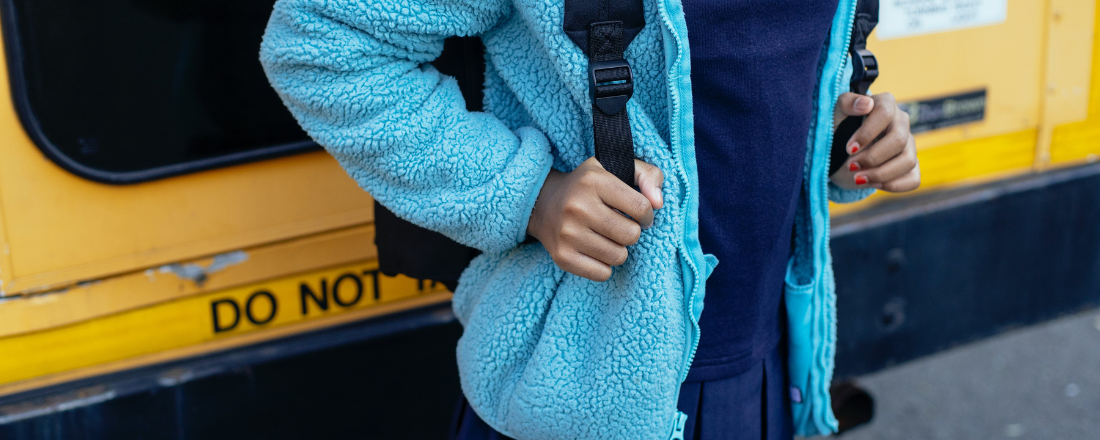
In the News
The Unequal Health Impacts of Diesel Pollution on Children and Communities
- Grist
-
Focus Areas
Chronic Disease Prevention, Environmental Health, Healthy Communities -
Issues
Asthma, Climate Change -
Expertise
Coalition & Network Building, Public Policy Advocacy -
Programs
Regional Asthma Management and Prevention Program

“Nearly $1B in federal funding could help clean up the unequal health impacts of diesel pollution.
Every day, more than 20 million kids ride to school on the 450,000 or so buses that trundle through cities and towns across the country. More than 90 percent of those vehicles run on diesel fuel, which emits harmful pollutants like fine particulates, ozone-forming substances like nitrogen oxide, and cancer-causing chemicals like benzene. They also spew a whole lot of greenhouse gases.
The Biden administration wants to do something about that. On Monday, it announced the latest tranche of funding to make America’s yellow buses more green. The Environmental Protection Agency awarded nearly $1 billion in grants to 280 school districts to help them go electric.
The allocations mark the third round of funding for clean school buses released under the 2021 Bipartisan Infrastructure Law. The money will purchase more than 2,700 vehicles to shuttle 7 million students in 37 states. Notably, 86 percent of the cash will go to low-income, rural, or tribal communities. School officials and public health advocates say it’s an important step toward reducing the impacts of diesel pollution — a burden disproportionately experienced by children of color and those in low-income areas.
“Clean air is not just an environmental issue. It’s a matter of public health and educational equity,” Devon Horton, superintendent of the DeKalb County School District in Georgia, told a cheering crowd at Stone Mountain Middle School on Monday.
Diesel pollutants burrow into the lungs, causing inflammation, asthma, and a host of other respiratory illnesses. Children are especially impacted because their respiratory systems are still developing, said Anne Kelsey Lamb, director of the Regional Asthma Management and Prevention Program at the Public Health Institute. Kids also have faster breathing rates than adults, Lamb added, which means they inhale even more toxic fumes.
Researchers have long documented the effects of diesel exhaust from school buses. More than 20 years ago, a study by the Natural Resources Defense Council and the University of California, Berkeley found that the level of exhaust inside the vehicles reached 23 to 46 times the amount the Environmental Protection Agency said would pose a significant risk of cancer. Another study, by researchers at the University of Connecticut, found a level of fine particulate matter inside school buses five to 15 times higher than those found outside. Such risks are compounded by the amount of time students spend on buses: A 30-minute ride to and from school every day amounts to 180 hours each year.
The effects on children of color and low-income students are especially profound. Sixty percent of low-income students ride the bus to school, compared to 45 percent of students from higher income households. Rates of asthma, which is exacerbated by diesel pollution, also are significantly higher among people of color.
Such exposure compounds the pollution burdens society has long placed on frontline communities. As a result of racist housing, investment, and energy-siting practices, people of color disproportionately live near major sources of pollution like highways, bus depots, power plants, and refineries. A study from the University of Washington found that regardless of income, people of color are exposed to higher levels of air pollution from nearly all emission sources. Researchers at Harvard University reported that people of color and low-income populations are also disproportionately exposed to fine particulate matter.

Air pollution has a cumulative effect, where the more sources of air pollution that children are exposed to, the greater the health impacts are going to be.Anne Kelsey Lamb, MPH
Director, Regional Asthma Management and Prevention (RAMP), Public Health Institute
To read the full article, click on the link below.
Originally published by Grist
More Updates
Work With Us
You change the world. We do the rest. Explore fiscal sponsorship at PHI.
Support Us
Together, we can accelerate our response to public health’s most critical issues.
Find Employment
Begin your career at the Public Health Institute.



